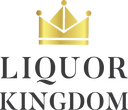
Are you trying to avoid a hangover or trying to moderate your drinking? Consider the alcohol content in your wine before consuming it because the high alcohol content may show immediate effects while sipping it.
The alcohol content in wine can affect its flavour profile which may not be according to your preferences. Therefore, check out wine alcohol content, like the volume or ABV, before purchasing your favourite alcoholic beverage, which can vary from one glass of wine to the next.
ABV (alcohol by volume)
ABV is a measurement of an alcoholic strength which means it presents the ethanol in a container or alcohol as a percentage of the entire volume of the drink. The higher the ethanol concentration determines, the more potent the alcohol, meaning the quicker it will affect your blood alcohol content (BAC). By determining the ABV on the container, you can find out whether it is a high alcoholic or not.
What is the alcohol content of wine?
Usually, the wine alcohol content may range between 5.5-15.5%. If you find a higher percentage, it may be a fortified wine.
The difference in wine alcohol percentage occurs due to the variation in fermentation, which means the sugar content in the wine and the grapes with any existing varietal.
How to determine ABV?
Professionals use a device called a hydrometer to measure the ABV. Professionals utilise this device to measure the sugar content of yeast during fermentation. A wine with higher residual sugar content has a lower ABV, and wines with more sugar content. For example, the alcohol content in red wine is around 12–15%.
Grapes play an important role too.
Wines originating in warmer climates, particularly in southern Italy, Australia, and France, with higher sugar content due to the grapes. Therefore, winemakers can ferment more sugar content into a higher ABV vine.
Countries with cooler climates, such as Germany, Oregon, and New Zealand’s wines, have higher acidity and lower alcohol content.
How to determine that the wine is stronger?
Generally, winemakers keep experimenting with yeast strains to make alcohol stronger. When they use their grapes in the existing wine, they do it to increase the sugar content for a higher ABV.
The majority of consumers favour wines with a medium-high Alcohol level. These red wines are frequently drier and heavier in tannins.
These preferences may be because of the supposed health benefits of red wine, an increase in organic and functional wines in this category, or changing palates.
A quick reminder: Red wine with fewer ABV has just as many health benefits as wine with a higher ABV. The advantages of not drinking any wine exceed those of doing so.
ABV Mark
It's essential to remember that the ABV listed on a bottle of wine may not accurately reflect the actual alcohol content. It's legal even though that sounds shady, particularly if you're trying to control your drinking.
ABV Effects
A higher amount of ABV can change the taste of a glass of alcohol.
Flavours
Usually, the lower alcoholic wines come with a lighter flavour and are more acidic. Such wines can be classified as lighter wines. Primarily, Lighter wines are categorised as white and sparkling wines. Red and white wines range between medium and higher ABV. Moreover, they are full-bodied and dry alcoholic beverages with lower acidity.
Sugar content can’t determine the accurate measurement of ABV in particular alcoholic beverages. However, it affects the amount of sugar transferred to alcoholic beverages during fermentation. For example, fortified dessert wines.
Pours
An alcoholic beverage with increased alcohol content beyond the average has increased serving size. Usually, an average red or white wine has a standard of five ounces comprising twelve per cent ABV.
A more substantial wine serves around three ounces serving size, and we consider drinking spirits; a vodka consists of around 1.5 ounces. So a higher ABV wine serves less alcohol content.
Ageing:
Most wines’ consuming date is within a year or two years of their vintage date. You can also see various wine bottles with an expiration dates. Do follow the instructions to avoid any bad things.
Wines with an alcohol content below 13.5% will age better if you wish to save a bottle for a special occasion. Fortified wines are an exception. If properly stored, specific ports can live for decades.
Wines are typically grouped according to varietal, but ABV can change according to the temperature, the fermenting process, and even the winemaker's preferences.
ABV-High Wines
Wines with a high alcohol content (ABV) are over 14.5%. Determine wine alcohol percentage first before drinking it.
Conclusion:
The quantity of sugar that grapes had generated at the time of harvest is directly associated with the alcohol content of wine: the loftier the sugar levels, the loftier the potential alcohol. While it occasionally happens, this does not imply that wines with higher alcohol content are sweeter. Instead, during fermentation, the yeast eats the sugar and turns it into alcohol. The significant elements in determining the grapes' sugar content and the amount of alcohol in your bottle are wine style (or varietal), the climate where the grapes were produced, and the winemaking/fermentation process.






